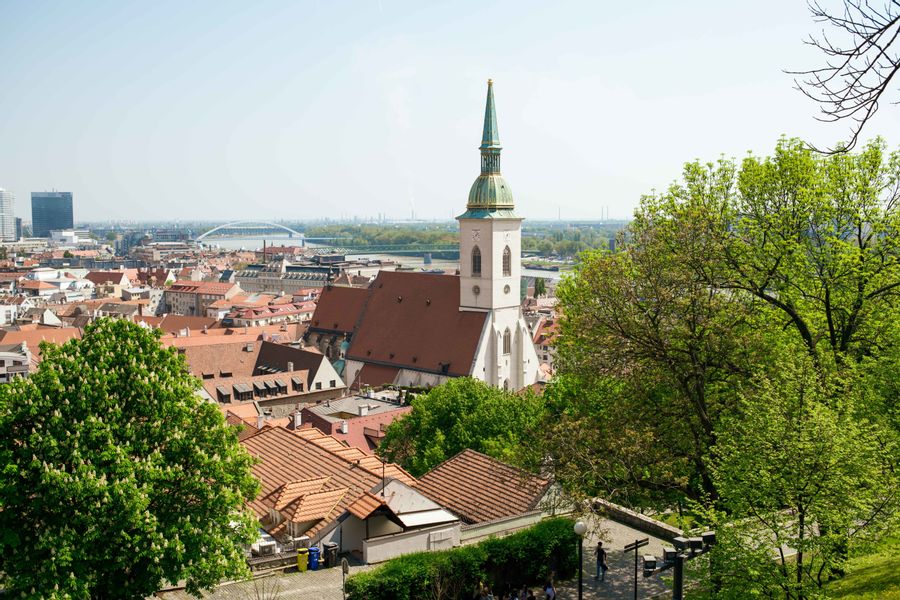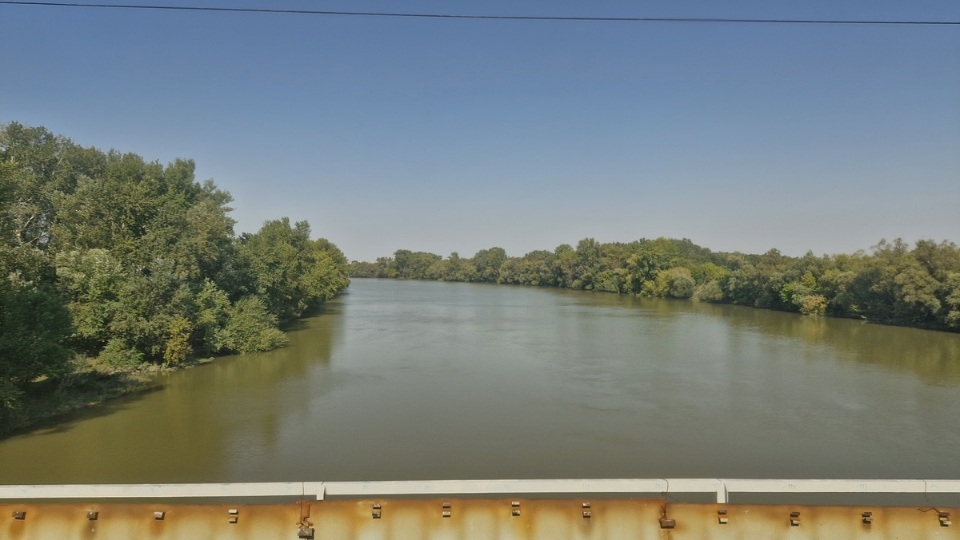26. Bratislava
 Bratislava Old Town. Photo:www.interrail.eu
Bratislava Old Town. Photo:www.interrail.euThe Journey
The short two hour train journey from Budapest meant that I arrived early in the afternoon when there were still a few hours of daylight left.
The journey to Bratislava was very pleasant. Even though I hadn't reserved a seat, I was able to find an empty six-person compartment, which I had to myself for most of the journey.
All along the train line, the swollen Danube could be seen on the left, reaching almost to the train tracks.
The scenery was very idyllic for the most part as the train passed through Hungary's fertile vineyards.
Everywhere there were signs that the flood waters of the Danube were rising. The ticket inspector said that we were lucky to have been allowed travel.
I was very surprised at how small Bratislava's main rail station was. It reminded me of a small provincial town station. This set the scene for the whole of Bratislava which has to rank as one of Europe's most diminutive capitals.
I had booked a walking tour for 3pm, so I had enough time to use the IDS BK public transport app to navigate public transport from the main station to Andrea's Home Exchange apartment on Krizni St. and back into the Old Town again. The 72-hour ticket cost €9.80.
The Accommodation

Andrea's modernised 1960s apartment was in the city centre, just outside the Old Town. I got it for HomeExchange GuestPoints with a cleaning fee of €20. The train station was 2km away. I was able to use the tram system to get close to the apartment. The apartment was clean bright and modern and contained everything you would need.

The tour guide Jakob designed the tour himself and called it 20th Century Bratislava's Dark History. He warned us at the beginning that it does not reflect well on either of the city's former rulers, the Soviets or the Communists. The country was essentially a dictatorship for 50 years.
During the 2nd world war, Slovakia was on the side of the axis, and after the war became the eastern block, however both regimes hurt many people. This plaque commemorates a man called Arom Grünhut who saved the lives of over a thousand Jews.
The statues below depict the communist ideal of hard-working labourers and peasants and was a common theme in statues erected across Eastern Europe.
Here is the 1960s Communist-built radio station building, in the shape of an inverted pyramid.
Its heavily-carpeted interior and high levels of insulation were designed to block out all outside sounds, while each overhanging roof level provides shade from the hot summer sun and the glass walls allow the low winter sun into the building to help heat it. It still uses less energy to heat and cool the building than a brand new high-spec office across the street.
Overall the tour was outstanding, it was interesting, yet entertaining and gave a great insight into last century’s complex Slovak history where its own worst enemies were its own governments.
At the end Jakob handed out leaflets on his personal recommendations of what to see and do and where to eat and drink. This became my Bratislava bible for the two-day stay.
As I wandered around I could hear loud music and clapping. I made my way in its direction and there was a large crowd of mixed ages, it didn't look like a concert or gig. Then there were several speeches made to enthusiastic applause. I asked a few people what was happening and they said it was a peaceful protest against the Minister for Culture who had decided that the only culture she would fund or promote would be Slovak culture.
I was now very hungry and decided to take up one of Jakob’s suggestions and tried out some of the street food in a food truck park close by. There was a wide range of foods with a price point about mid-way between Hungary and Ireland.
The next day I got a tram into the Old Town which I had not yet seen. It was stunningly beautiful and very easy to navigate. You could walk across it from end to end in 15 minutes.
Here is Bratislava's pride and joy, an old entry into the city called St. Michael's Gate.
For lunch, another of the tour guide's recommendation was U Sedliaka, where I had garlic soup and a spicy stuffed potato pancake washed down with the most popular local beer Zlatý Bažant.
After lunch I set off again wandering. I thought that the Bratislava Opera House was a particularly beautiful building.
I then decided to cross over the swollen Danube to see the aptly-named UFO Tower. The views from the top come highly recommended. Despite the website saying it was open, when I got there it looked like a construction site. The Danube had breached it banks overnight and the tower was closed. The water had entered the reception area and was being pumped out.
On the way back over the bridge, there was a great view of the castle.
As none of the museums or galleries caught my eye I decided to spend the rest of the afternoon relaxing. First with a coffee ...
... and then with a tasting tray of eight small glasses of local craft beers. My favourite of all was a non-alcoholic IPA.
On my way back to the apartment I came across an Irish pub, so I took a photo - that was two out of two so far!
Overall Impression
I really loved the city. Coming after big bustling Budapest this had a totally different vibe, one that was more relaxed and a tad friendlier. There were definitely more smiles about the streets and the general feeling is that splitting with Czechia was a positive outcome for the country as it allowed Bratislava to start to shine.
The EU money that has poured in has also helped enormously, with new trams, motorways and new construction projects everywhere. For a capital of just 440,000 people I think it is starting to punch above its weight.



















Comments
Post a Comment